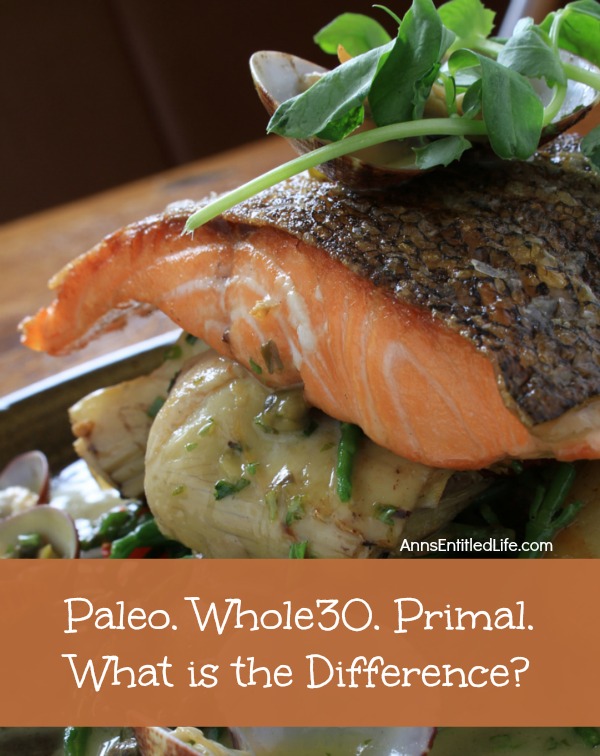Paleo. Whole30. Primal. What is the Difference?
Comparing and contrasting the basic differences and similarities between Paleo, Whole30, and Primal eating and lifestyles.
Paleo. Whole30. Primal. Three very similar ways of eating and lifestyles, but each have their differences as well. For example, paleo dieters might avoid fats while primal dieters are okay with eating fatty foods and eggs. Below are the key factors of each lifestyle:
Paleo
As mentioned above, Paleo followers avoid fatty foods and prefer lean meats. They may also avoid eggs and other sources of saturated fats. Here are a few other “rules:”
- Avoid dairy
- No legumes
- No soy
- Avoid grains, gluten and corn
- Avoid/limit salt
- Avoid potatoes or starchy vegetables
- Alcohol is occasionally ok
- “Eat until you’re full”
Primal
You’ll find that Primal and Paleo are very similar, except for a few differences listed below:
- Once in a while, raw/fermented dairy (yogurt, kefir, etc.) is ok.
- No need to avoid fats/saturated fats
- Limit peas
- Legumes are ok in moderation
- Sweet potatoes are ok in moderation
- Soy is ok
- Monitor your food portions
And here are some similarities between Primal and Paleo:
- Avoid grains, gluten and corn
- Avoid/limit salt
- Alcohol is occasionally ok
Whole30
Whole30 follows the basic premises and framework of Paleo, but does restrict other foods that are allowed in either Paleo or Primal. It is done for 30 days to “reset” your system and allow you to follow healthier habits. Here are some of the stricter rules of Whole30, which are okay if you’re following Paleo:
- No alcohol
- No eating out at restaurants
- No “Paleo-fied” treats such as Paleo pancakes, Paleo cookies, etc.
- No honey
- No added sugars
- No legumes/grains
With Whole30 you’re basically diving in 100% and following their set guidelines for 30 days. You’ll find that Paleo and Primal don’t really have “set” guidelines, and it depends on how “strict” you want to be. For example, some people may want to eat 80% clean, 20% off, while others may want to follow a 90%/10% ratio.
With any nutrition plan or lifestyle change, it’s all about finding what works for you.Talk to your doctor. Get the medical facts about each diet and lifestyle. Experiment with different types of diets and make certain to monitor how you feel, how your body changes and how food affects you. You may find that eating dairy leads you to feel bloated, or that Whole30 is too strict and restrictive for you. Finding the right plan depends on you, your lifestyle, and how committed you want to be.
Good luck!
Books you might want to read before considering any of these diet and lifestyle changes:
● The Whole30: The 30-Day Guide to Total Health and Food Freedom
● The Primal Blueprint 21-Day Total Body Transformation: A step-by-step, gene reprogramming action plan
● The Paleo Solution: The Original Human Diet
● Disclosure: the links in this post may contain affiliate links.
● For Recipes on Ann’s Entitled Life, click here.
● If you enjoyed this post, be sure to sign up for the Ann’s Entitled Life weekly newsletter, and never miss another article!
Note: I am not a doctor, and do not play one on the internet. Be sure to check with your physician to see if one of these diets is right for you!

Leave a Reply